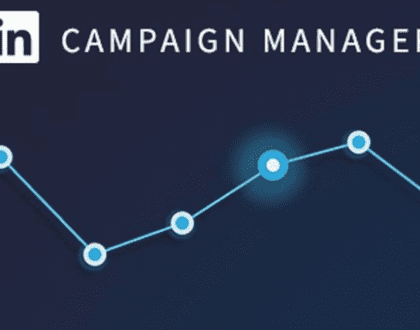Business Essentials: Top Strategies to Name Your Business
by EnyOsung
This blog post is curated from Inbound Rocket. I love it because choosing a name for your business is often one of the hardest tasks for start-ups. This single task often leads to much procrastination and lost time. An even worse fate is choosing the wrong name, which then has to be changed after the business has started trading. This can be costly in a lot of ways including brand identity, marketing materials, and stationary like business cards.
This post walks entrepreneurs and small business owners through the steps to choose the right business name for a startup. Remember that your business name is a vital element of you branding so it is important choose a name that is both memorable and relevant.

Brand Essentials – How to name your business
In our series around the branding of your startup or small business, we already talked about how you can use lean startup principles for branding your company. We also talked about the 6 P’s of branding, which help you make up your brand story (positioning, promise, personas, personality, product, and pricing).
Every brand story, however, needs a hero, somebody who people can relate too. Recognition will start with your brand name.The name appears on your website, your business cards, your social networks, your product, and everywhere else. In both offline and online, to identify your company and your company’s products and services. Today we will be looking into one of the most frustrated items around branding: the naming of your startup.
Naming your newly founded company is often met with a lot of frustration. It’s hard enough to come up with a name that isn’t already in use, but in the end, your entire team has to agree on the name as well. At the end to only found out, you forgot to check if the Twitter, Facebook or any other social handle wasn’t already taken and you’ve got to start your searching from scratch again.
Not to put you under even more stress, but getting the right name for your new company can help make or break your branding. For example, in 1997, athletic gear company, Reebok, launched a new women’s running shoe with the name Incubus. The big problem was, though that an incubus is a male demon who visits women in their sleep to rape them, as pointed out by a newspaper in Arizona. Reebok recalled 18,000 boxes of shoes and had to apologise for the mistake they made.
So how do you come up with a good and effective name? What things should you do (or do not do) when naming your company?
The psychology behind a good company name
Psychological studies have been establishing a direct correlation between your company’s name and the expectations it brings with your consumers or users. Wanke, Herrmann and Schaffer published a research in 2007 called “Brand name influence on brand perception”. In this research, they looked at the way people would perceive hotels based only on their names and discovered a significant connection between the two. Everyone who participated in the research valued hotels in which the name of the hotel triggered a specific emotion much higher than other hotels that did not give the emotional trigger with the name. Even when there was factual information given to them about the hotels. As Carol Moog, Ph.D., would say: “A name without an emotional, non-verbal association is virtually useless – it will not be retained in the mind of the target audience.”
That’s why the previous lessons about knowing your audience are so important. If you know your audience well enough, you can start to consider what the effect of your name will have on them.
First things first
Before we can get into the actual exercise of coming up with potential names for your new company let’s first give you some items you need to keep in consideration when coming up with different names.
#1 If you can, stick to 2 syllables
Think about some of the most successful companies out there. What do they all have in common? Their names are always short and have a maximum of two syllables. Look at companies like Google, Twitter, Facebook, DropBox, LinkedIn, Starbucks. Having the two syllables makes them memorable and catchy. Make it even better by keeping your name under ten characters, names like this are easier to say, type, email and remember.
#2 Be memorable
Being short and descriptive is not enough, try picking up a name that people remember
#3 Make it obvious to everyone
The Beatles, Flickr, Yahoo! and others might have succeeded and ended up with household names. That doesn’t mean it will work out like this for you. Especially when you’re establishing a new brand, don’t be too inventive with your spelling and punctuation. If you stick to standard spelling, punctuation, and even pronunciation you will make your name more memorable and better communicable.
#4 Make it a story
Zynga was named after Zigna, the dog of the CEO. People will remember that because it’s a cute story, despite it being hard to spell the name ?
#5 Be recognisable
Naming your company after some ancient god that nobody ever heard about might seem clever to you, but for most people it might just make them scratch their head and think, “Why?”.
#6 Descriptive words
Descriptive words still help in your search ranking. On another note, hinting at what your company does, also help people to understand what your business does, names like “China Mobile”, “Vitamin Water, or “Pizza Hut”, will let you understand by just looking at the name what you can expect.
#7 Have just one meaning
Even though your name might sound great in your native tongue, it doesn’t mean it will mean the thing you want in another language. Search for your name on Google, YouTube, Twitter, Instagram, anywhere you can think of that might give you insights into how your name is being used. A few things to keep in mind:
- Meaning in other languages; Lumia, the smartphone of
NokiaMicrosoft, means prostitute in Spanish slang for example. - Negative connotations; KFC was always known as Kentucky Fried Chicken up until 1991; they rebranded themselves to KFC because of the increasingly health-conscious consumer market.
- Lots of similar names in your or other industries; For example Dove and Dove, or Apple and Apple, or evenDomino’s Pizza and Domino’s Sugar.
#8 Don’t restrict yourself
Just that because you’re selling chicken right now, doesn’t mean you will be selling chicken the rest of your life. Boston Chicken is an example like that, which rebranded into Boston Market in 1995 when they decided to sell more than just chicken. By making your brand name a bit more generic, you can still pivot your company later on, without having to do a rebranding exercise with all the problems and costs associated with that.
#9 Avoid clichés
You and millions of other startups consider themselves “prestigious”, that doesn’t mean you have to put in in your name.
Time to start brainstorming
Okay, so we know why we have to pick a great brand name, we know which pitfalls we have to avoid. Now it’s time to start brainstorming. Gather your co-founders in one room and grab some post-its! If you’re starting the business just by yourself, it still is worthwhile to do the exercise with somebody else. Ask a friend who knows the space you’re operating in to assist you with this one!
Brainstorming a great name, can be easily done by following just some basic steps.
#1 Word Association
Start, by getting into the right mood, by playing a simple word association game. To make it easier, try choosing two or three topics related to your business idea. For example, your building a company related around mobile payments. You can use the words “payment” and “on the go” as topics for this word association game. You can use the following Brand Personality Adjectives with this exercise as well:

Let everyone participating in the exercise start shouting out different words that they associate with the topics and let one person write all those words down on different post-its and stick them to the wall. Time-box the word association game to make sure you don’t end up running in circles and wasting your time.
#2 Start generating names
With a blank piece of paper in front of each person in the room, everyone now has to begin to generate ten names (in 10 minutes). Don’t make the time for generating names to long, the longer people have time to think the more they tend to overthink about coming up with the perfect name. Since there are no wrong ideas at this stage yet, people should just start writing down what comes first to mind. Remember the pitfalls though when naming from our previous paragraph.
You can also use online tools like for helping up with names:
#3 Generate even more
When looking at other the names others came up with, it’s easy to come up with potential names in the same space as the ones your reading. So share your paper with your neighbour in the room and generate five more names (in 5 minutes) based on the names already written down by your co-founder.
#4 Start identifying the gems
Hand your paper to someone else again. This time, we’re not going to add more names to the list, but out of the 15 names on the paper, you will mark your five favourites. When everyone marked their favourite names, it’s time to share it with everyone in the group. Share all the names on the paper, and tell which ones are your favourite and why. Write down the favourites on post-its again, to make them visible for everyone in the group.
Congratulations, you’ve now got a big list of potential brand names for your new company.
Now … Is it available?
Having a huge list of names is great of course, but what if the domain name or one of the social accounts is not available anymore? Thankfully there are services out there like Namechk. Namechk will do a search for you across domain names and social networks to check the availability for you. You can probably already cross off some of the names on your list based on the availability.
Is it sticky?
The last step before settling with your potential new found brand name is to test the name, is it sticky enough for people to remember? When talking to your potential customers, practicing your companies pitch, put in the name you like best.
Remember when we told you to “don’t pitch your idea at first” when you know you’re solving a problem, and you start building on your product and your brand, it’s a good thing to pitch your idea (and new brand name). Ask the people afterwards to recite what you just told them. See what sticks, is your brand story sticking? Is your name sticking? When they are you know, you’re on the right track with your branding.
Time to start registering that domain name, and those social media accounts. You’ve got yourself a name!
**************************************************************************************************************************************************************************************
smallbiz-emarketing provides expert market research, marketing on all digital platforms and offline advertising consultancy specifically for small businesses and start-ups for that want results from their online marketing. Checkout our Services page to see how our digital marketing services can help your business to get more customers and sell more, faster. Also checkout our Memorable brand names page to see our genuinely affordable digital marketing packages for small businesses and startups. Why not sign up for our newsletter using the simple form on the right? You can also follow us on social networks. Finally, we’d love for you to share this post with your network using the share buttons below.
**************************************************************************************************************************************************************************************
We’d love to have your feedback and suggestions about this post. What strategies have you used to choose the name for your business? Has the name of your business helped or hindered your brand? Please leave your comments in the Comments Section below.
Other posts you may like
11 essential elements every blog post needs (infographic)
4Ms of Business Foundation every company needs Series – part 2 (Managing Start-ups & Small Business)
Simple strategies to test your big start up idea
Psychological Pricing Strategies Guide – 9 secrets to sell more
Recommended Posts

Eny talks with Lydia on The Joyful Path Podcast
9th December 2022

How to use new LinkedIn Campaign Manager
20th July 2022


